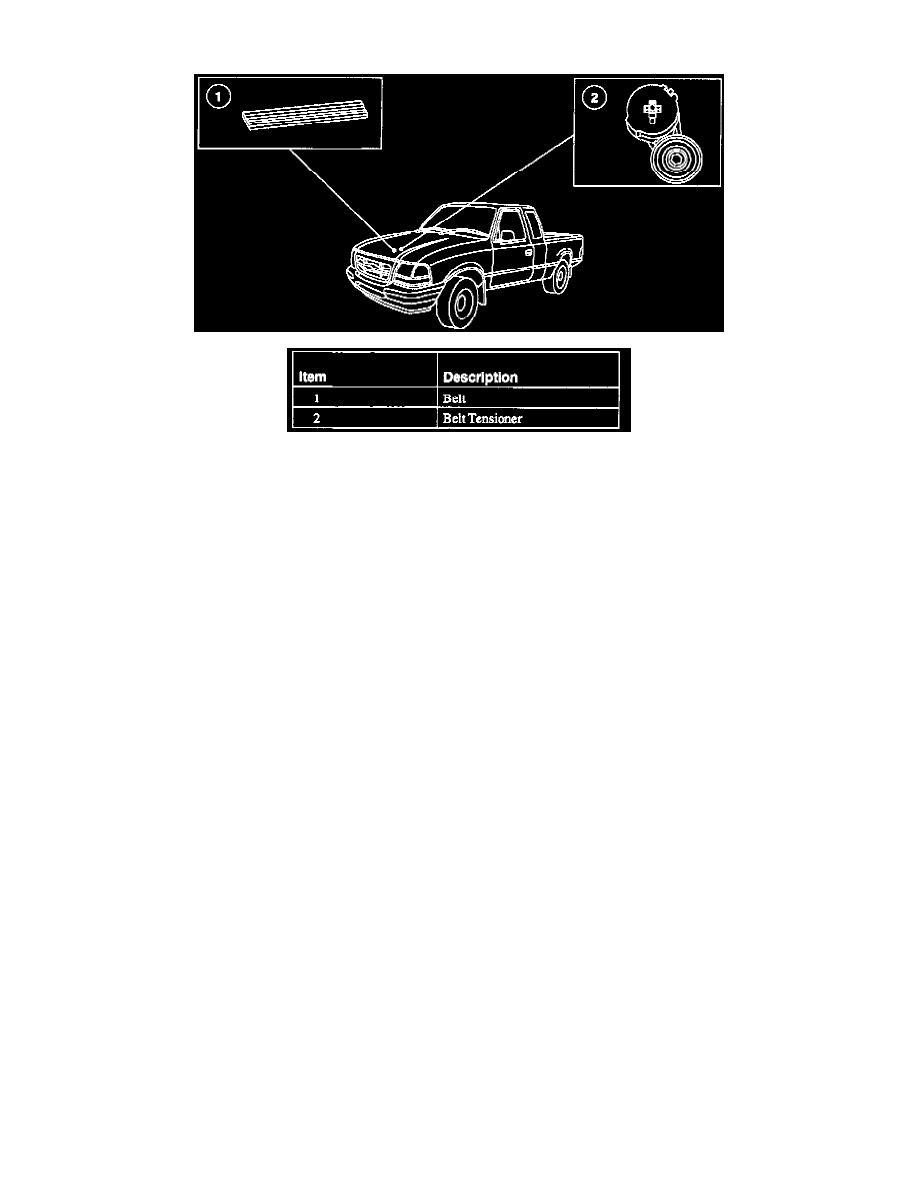Ranger 2WD V6-3.0L VIN U (1998)

Drive Belt: Description and Operation
CAUTION: The drive belt tensioner has no provision for adjustment and will be damaged if forced to travel beyond its operating range. Automatic
tensioners are calibrated at the factory to provide the correct amount of tension to the belt. There is no need to check tensioners for proper tension.
NOTE:
-
Drive belts with automatic drive belt tensioner do not require adjustment.
-
When a drive belt is replaced or re-installed after a service procedure, the drive belt does not fully seat into pulley grooves until engine has run for
several minutes.
Replacement drive belts should be of the same type as originally installed.
Drive belt chirp is a regularly occurring chirping noise that occurs due to:
- pulley misalignment.
- excessive pulley runout.
It can be a result of a damaged pulley or an improperly replaced pulley that was not properly aligned.
To correct drive belt chirp:
- determine the area where the noise comes from.
- check each of the pulleys in that area with a straightedge to the crankshaft pulley for front accessory drive and the water pump drive pulley to the
water pump.
- look for the accessory pulley to be out of position in the fore/aft direction or at an angle to the straightedge.
Drive belt squeal is an intermittent noise that occurs when the drive belt slips on a pulley during certain conditions such as:
- engine start-up.
- rapid engine acceleration.
- A/C clutch engagement.
Drive belt squeal can occur under the following conditions:
- The A/C discharge pressure goes above 2895 kPa (420 psi). This can occur if:
-
The A/C system is overcharged.
-
The A/C condenser airflow is blocked.
-
The engine cooling fan is not engaging fully at idle.
- Any of the accessories are damaged, have a worn or damaged bearing or internal torsional resistance above normal for any reason. All of the
accessories should be rotatable by hand in the unloaded condition. If any are not, the accessory should be inspected.
NOTE: If fluid does get on the drive belt during service, clean the drive belt with soap and water and thoroughly rinse with clean water. The drive
belt does not have to be replaced if no apparent damage has occurred.
- If fluids get on the drive belt. This would include power steering fluid, engine coolant, engine oil and air conditioning system lubricant.
- The drive belt is too long. It will be evident by the arm of the drive belt tensioner resting on the stop. If the drive belt tensioner is resting on the stop,
